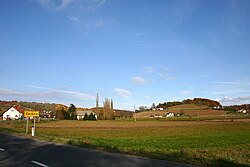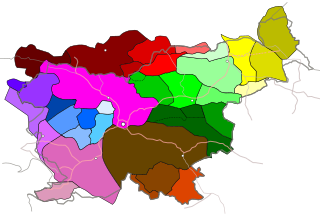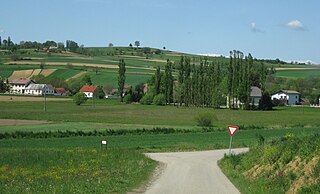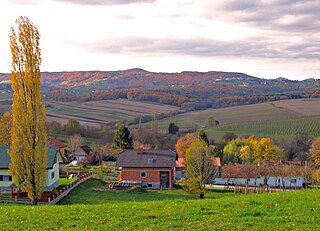| Serdica | |
|---|---|
 | |
| Coordinates: 46°45′59.3″N16°1′27.01″E / 46.766472°N 16.0241694°E Coordinates: 46°45′59.3″N16°1′27.01″E / 46.766472°N 16.0241694°E | |
| Country | |
| Traditional region | Prekmurje |
| Statistical region | Mura |
| Municipality | Rogašovci |
| Area | |
| • Total | 4.99 km2 (1.93 sq mi) |
| Elevation | 239.5 m (785.8 ft) |
| Population (2016) | |
| • Total | 556 |
| • Density | 110/km2 (300/sq mi) |
| [1] | |
Serdica (pronounced [sɛɾˈdiːtsa] , in older sources also Srdica; [2] Prekmurje Slovene: Srdica, [3] Hungarian : Seregháza [2] ) is a village in the Municipality of Rogašovci in the Prekmurje region of northeastern Slovenia. [4]

Prekmurje Slovene, also known as the Prekmurje dialect, East Slovene, or Wendish, is a Slovene dialect belonging to a Pannonian dialect group of Slovene. It is used in private communication, liturgy, and publications by authors from Prekmurje. It is spoken in the Prekmurje region of Slovenia and by the Hungarian Slovenes in Vas County in western Hungary. It is closely related to other Slovene dialects in neighboring Slovene Styria, as well as to Kajkavian with which it retains partial mutual intelligibility and forms a dialect continuum with other South Slavic languages.

Hungarian is a Finno-Ugric language spoken in Hungary and several neighbouring countries. It is the official language of Hungary and one of the 24 official languages of the European Union. Outside Hungary it is also spoken by communities of Hungarians in the countries that today make up Slovakia, western Ukraine (Subcarpathia), central and western Romania (Transylvania), northern Serbia (Vojvodina), northern Croatia, and northern Slovenia. It is also spoken by Hungarian diaspora communities worldwide, especially in North America and in Israel. Like Finnish and Estonian, Hungarian belongs to the Uralic language family. With 13 million speakers, it is its largest member in terms of speakers.

A village is a clustered human settlement or community, larger than a hamlet but smaller than a town, with a population ranging from a few hundred to a few thousand. Though villages are often located in rural areas, the term urban village is also applied to certain urban neighborhoods. Villages are normally permanent, with fixed dwellings; however, transient villages can occur. Further, the dwellings of a village are fairly close to one another, not scattered broadly over the landscape, as a dispersed settlement.













